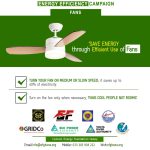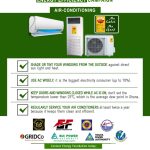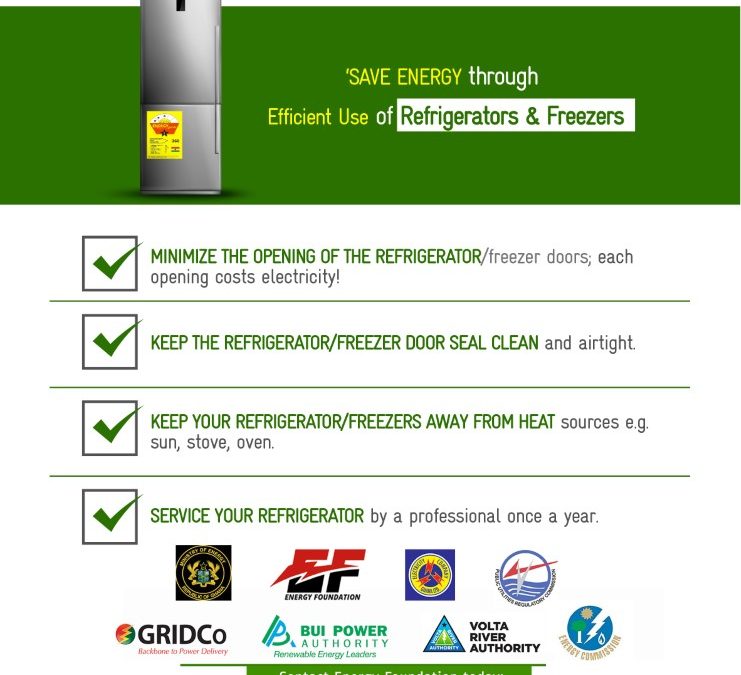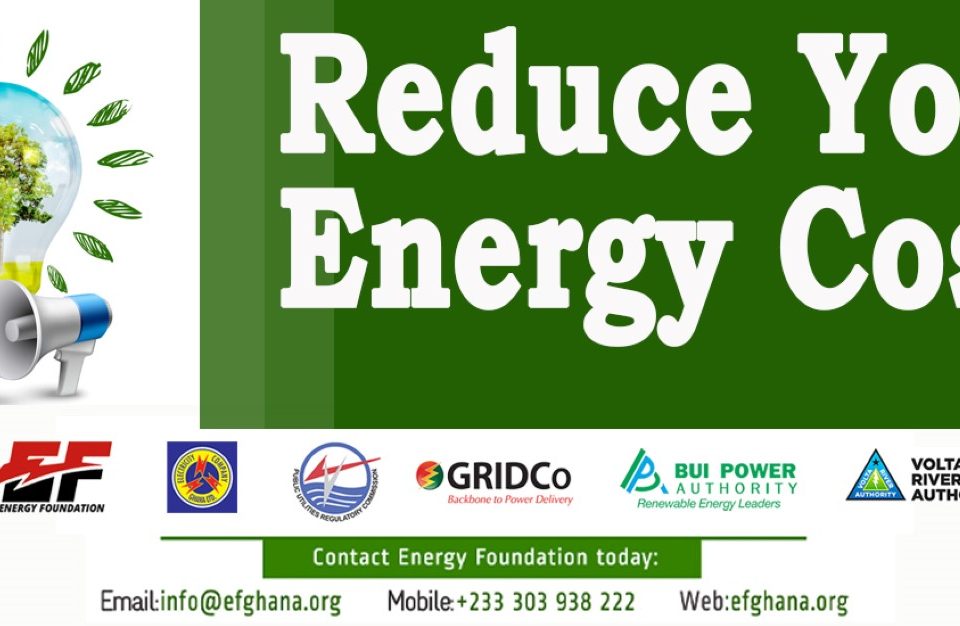FANS
June 21, 2024AIR CONDITIONER
June 21, 2024
- When purchasing a new refrigerator/freezer, it is worth considering a high efficiency model. Efficient models usually have efficiency labels to aid identification. E.g., the Ghana Standard Authority Energy Guide identifies efficient products imported into the country. Ask the vendor to show you the efficiency label, otherwise seek expert advice.
- The more stars on the energy guide label the better.
- In a situation where the refrigerator/freezer compressor needs to be replaced, you could use energy efficient compressor motors. Seek expert advice.
- A full freezer works more efficiently than a nearly empty one. Fill up unused space with plastic bottles filled with water. Be careful not to block the fan that allows cold air to circulate.
- It is cheaper to run one big refrigerator than two small ones.
- Decide what you want before opening the fridge/freezer.
- By Developing the habit of keeping items in the same place all the time in a fridge/freezer you minimize the amount of time it remains open and thus save energy.
- You can label items in your fridge/freezer and minimize the amount of time it remains open.
- Uncovered foods release moisture and makes your fridge/freezer work harder and thus use up more energy.
- You can replace inefficient seals and cut down your bills. Check that second-hand fridge/freezer you are planning to buy for dirt, cracks, breaks, and brittleness in the rubber seal.
- It is not economical to buy to buy a cheap second-hand fridge/freezer that is not energy efficient. Be sure it is energy efficient or you will pay for the inefficiency.
- Choose the right size for the family.
- Don’t put hot foods and drinks in the fridge/freezer.
- Avoid placing freezers/refrigerators too close to the walls or in the corners;
- Allow a space of about 4-6 inches between the wall and the fridge for adequate ventilation of the coils at the back.
- Clean the coils at the back of the refrigerator as often as possible. Dirt build-up makes the refrigerator waste energy.
- Keep the refrigerator door seal clean and air tight.
- Test the seal around the door of fridges/freezers by closing the door on a thin strip of paper, ensure that the paper is tightly gripped and does not slide easily. If it does, then the seal is worn out and needs to be replaced.
- Instead of using the microwave oven, defrost your frozen food in the fridge.
- Keep refrigerators/freezers away from heat sources e.g., Sun, stove, oven.
- Unplug and defrost the freezer compartment regularly since ice build-up causes excessive electricity wastage.
- Manually defrosting freezers use less electricity than automatic ones. This is provided the ice is not thicker than 6mm before defrosting.
- Refrigerators with freezers on top(top-mounted) save more energy than ‘side by side’ models.
- The top loading chest type freezer (chest freezer) is between 10-25% more efficient than the front load upright freezer. This is because when the door is open, the cold air stays inside rather than spill out.
- By regulating your fridge effectively, you could save enough:
- 1 to 5 degrees Celsius for fresh food.
- 5 degrees Celsius for freezing.
- 0 degrees Celsius for long term storage.
- By setting your freezer regulator at medium or midway between the max and minimum settings you save energy.





